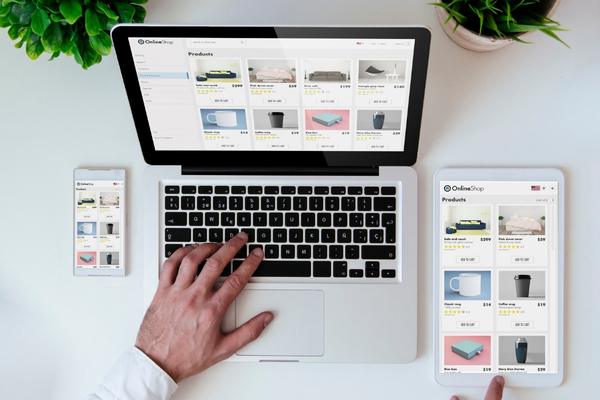Your audience isn’t just on desktops anymore. They’re browsing your site from phones, tablets, laptops, and smart TVs—and they expect a seamless experience on every one of them. That’s where responsive design comes in. If your website doesn’t adapt, you’re not just falling behind—you’re actively losing customers.
Table of Contents
ToggleWhat Is Responsive Web Design?
Responsive web design means your website layout adjusts fluidly to fit any screen size. Whether someone visits your site on a large desktop monitor or a small smartphone, the content automatically resizes and reorganizes to provide the best possible experience.
It’s important to distinguish between responsive, adaptive, and mobile-only design:
- Responsive design is fluid and flexible across all screen sizes.
- Adaptive design uses fixed layouts tailored to specific screen widths.
- Mobile-only sites are separate websites built solely for mobile visitors.
Responsive design is the most future-proof and user-friendly option.
The Mobile-First World We Live In
Over 60% of all web traffic now comes from mobile devices—and that number keeps growing. Users no longer tolerate websites that pinch, zoom, or scroll awkwardly. They want content that looks great and functions properly from the second it loads.
A slow or unoptimized mobile experience can drive visitors away fast. In today’s digital landscape, your mobile site is often your first impression—and sometimes, your only one.
SEO Benefits of Mobile-Friendly Design
Google now uses mobile-first indexing, meaning it evaluates the mobile version of your site before the desktop version when determining rankings. If your site isn’t responsive, you risk falling behind in search results.
Responsive websites also:
- Lower bounce rates by keeping users engaged
- Improve time-on-site, a key ranking signal
- Make it easier for Google to crawl and index your content
Simply put: responsive design is good SEO.
Better User Experience = More Conversions
Great UX (user experience) leads to more action. A responsive site ensures your forms, buttons, menus, and media all work smoothly on any device.
That means:
- Forms that are easy to complete on a phone
- Buttons that are big enough to tap
- Layouts that guide users toward purchases or contact forms
Better usability = higher conversions.
Why Businesses Can’t Afford to Ignore Mobile Users
When mobile users hit a non-responsive site, they don’t struggle—they bounce. And when they bounce, your business loses leads, sales, and credibility.
Real-world example: A local service provider saw a 40% increase in inquiries after switching to a mobile-responsive site. Before the change, mobile users were abandoning their outdated desktop-only layout.
Ignoring mobile usability is like closing your doors to half your customers.
Working with an Expert Web Design Agency in New Jersey
Building a responsive website isn’t just about resizing images—it takes skill, planning, and technical know-how. That’s why working with a professional web design company is so important.
An expert web design business in NJ can ensure your site performs flawlessly across all devices—now and in the future. They’ll help you optimize for both user engagement and SEO, so your site works hard for your business.
Final Thoughts: Design for Every Screen
Responsive design isn’t a trend—it’s the standard. It ensures your message gets across, no matter how people access your website.
If you want to protect your search rankings, keep users happy, and grow your business, investing in mobile-ready design isn’t optional—it’s essential. Contact us today for expert web design.


